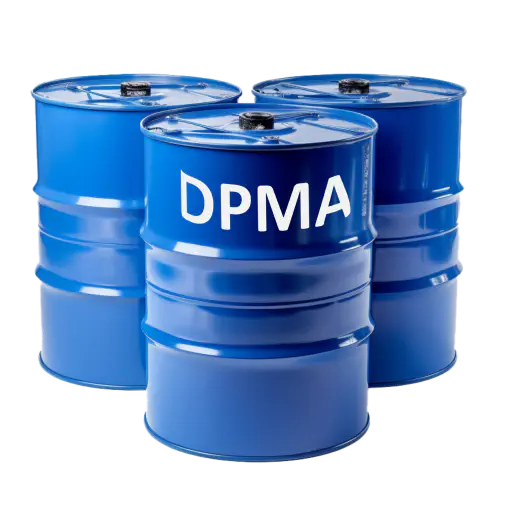DPMA, also known as Diisopropyl Methylphosphonate, is an industrial solvent with the following physical features:
Characteristics
-
Chemical formula:
C7H17O3P
-
Molecular weight:
Approximately 182.2 g/mol
-
Appearance:
DPMA is a colorless liquid.
-
Odor:
It generally has a mild, ester-like odor.
-
Density:
The density of DPMA is around 0.972 g/mL.
-
Boiling point:
DPMA has a boiling point of approximately 190-200°C (374-392°F).
-
Melting point:
DPMA typically solidifies at temperatures below -50°C (-58°F).
-
Solubility:
DPMA is miscible with many organic solvents such as ethanol, acetone, and benzene.
-
Vapor pressure:
The vapor pressure of DPMA is relatively low at normal temperatures.
-
Flash point:
The flash point of DPMA is usually above 110°C (230°F), making it relatively safe in terms of flammability.
These physical characteristics make DPMA suitable for various industrial applications, including use as a solvent, extraction agent, and a chemical intermediate in the production of various chemicals. As with any chemical, proper handling, storage, and safety precautions should be followed when working with DPMA.
Applications
DPMA (Diisopropyl Methylphosphonate) is an industrial solvent with diverse applications in various industries. Some of the common applications of DPMA are:
-
Chemical Manufacturing:
DPMA can be used as a chemical intermediate in the production of pharmaceuticals, pesticides, and flame retardants. It serves as a key component in the synthesis of these compounds.
-
Extraction and Purification:
DPMA is utilized as a solvent in extraction processes, particularly for separating and purifying certain compounds. It can be used to extract valuable chemicals from plant materials or separate desired components in different industries.
-
Fuel and Lubricant Additive:
DPMA can act as an antiknock agent or fuel additive, improving the performance and efficiency of gasoline and other fuels. It enhances the detonation resistance and combustion characteristics of the fuel.
-
Flame Retardants:
DPMA is used as a component in certain flame retardant formulations. It can help reduce the flammability and fire spread in various materials such as plastics, textiles, and foams.
It’s important to note that DPMA’s applications in chemical manufacturing and extraction processes may be subject to specific regulations and safety guidelines. As with any industrial solvent or chemical, proper handling, storage, and compliance with safety practices should be followed to ensure safe and responsible usage.
